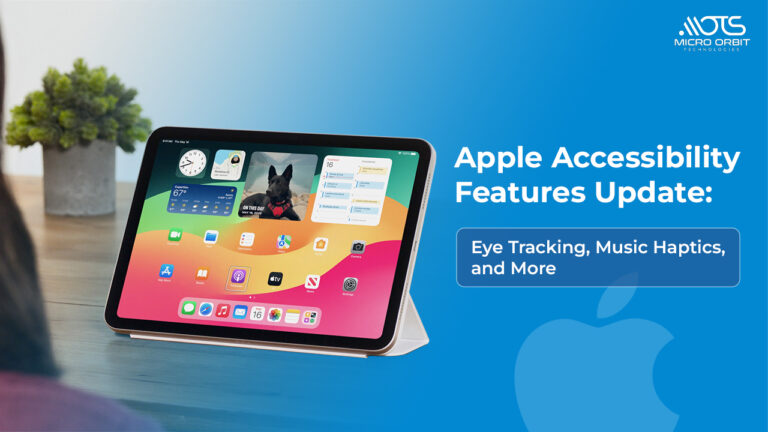Apple Accessibility Features Update: Eye Tracking, Music Haptics, and More

Apple continues to lead the charge in accessibility with the announcement of several new features set to launch later this year. The latest innovations include Eye Tracking for effortless device control, Music Haptics for a tactile musical experience, and Vocal Shortcuts for enhanced task management. These advancements aim to make Apple devices more inclusive, leveraging the power of artificial intelligence and machine learning to cater to a diverse range of user needs.
Eye Tracking: A Revolutionary Way to Navigate
Eye Tracking is one of the most anticipated features, designed to assist users with physical disabilities in controlling their iPads and iPhones using just their eyes. Utilizing the front-facing camera, Eye Tracking sets up and calibrates in seconds, with all data securely processed on-device to ensure privacy. This feature enables users to navigate through iPadOS and iOS apps seamlessly, activating elements with Dwell Control, which registers prolonged eye contact as a selection. Eye Tracking eliminates the need for additional hardware, making it a versatile and accessible solution for many users.
Music Haptics: Feel the Music
Music Haptics is a groundbreaking feature for users who are deaf or hard of hearing, offering a new way to experience music through the Taptic Engine in iPhone. When enabled, Music Haptics translates audio into tactile feedback, playing taps, textures, and refined vibrations synchronized with the music. This feature works across millions of songs in the Apple Music catalog and will be available as an API for developers to integrate into their apps, ensuring a more inclusive musical experience.
Vocal Shortcuts: Personalized Voice Commands
Vocal Shortcuts introduce a new level of customization for iPhone and iPad users, allowing them to assign custom sounds or utterances to launch shortcuts and complete complex tasks. This feature is particularly beneficial for users with speech impairments or those who have difficulty with traditional voice commands. By recognizing a wide range of vocalizations, Vocal Shortcuts provide a more personalized and efficient way to interact with devices, enhancing the overall user experience.
Additional Enhancements
Alongside these major features, Apple is rolling out several other accessibility updates:
- Vehicle Motion Cues: Designed to reduce motion sickness for passengers using iPhones or iPads in moving vehicles, this feature displays animated dots on the screen to align with vehicle motion, minimizing sensory conflict.
- Voice Control in CarPlay: Users can navigate and control CarPlay apps using voice commands, enhancing accessibility for drivers with physical disabilities.
- Color Filters and Sound Recognition in CarPlay: Color filters make the CarPlay interface easier to use for colorblind users, while sound recognition alerts those who are deaf or hard of hearing to car horns and sirens.
- VisionOS Enhancements: Upcoming updates to visionOS will include system-wide Live Captions for FaceTime, support for more hearing devices, and features to assist users with low vision or sensitivity to bright lights.
Apple’s commitment to accessibility is further demonstrated by features like VoiceOver, Zoom, and Guided Access, which support users with a variety of needs. The new updates join an already robust suite of accessibility tools, ensuring that Apple products remain inclusive and user-friendly.
Apple’s latest accessibility features showcase the company’s dedication to making technology accessible to everyone. By integrating advanced AI and machine learning capabilities, Apple continues to innovate and break down barriers, providing a more inclusive digital experience for all users.